 W
WAudouin's gull is a large gull restricted to the Mediterranean and the western coast of Saharan Africa and the Iberian peninsula. The genus name is from Ancient Greek ikhthus, "fish", and aetos, "eagle", and the specific audouinii and the English name are after the French naturalist Jean Victoire Audouin.
 W
WThe Australasian grebe is a small waterbird common on fresh water lakes and rivers in greater Australia, New Zealand and on nearby Pacific islands. At 25–27 cm (9.8–10.6 in) in length, it is one of the smallest members of the grebe family, along with the least grebe and little grebe.
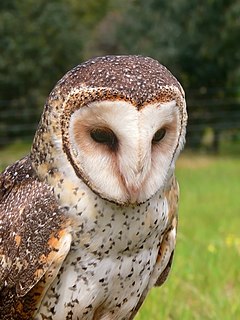 W
WThe Australian masked owl is a barn owl of Southern New Guinea and the non-desert areas of Australia.
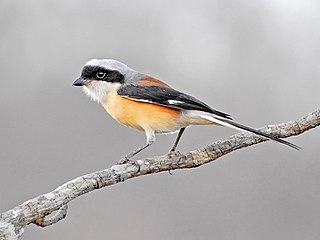 W
WThe bay-backed shrike is a member of the bird family Laniidae, the shrikes, resident in South Asia.
 W
WThe black scimitarbill, also known as the black wood hoopoe, is a species of bird in the family Phoeniculidae.
 W
WThe black-throated barbet is a species of bird in the Lybiidae family. It is found in Djibouti, Eritrea, Ethiopia, Kenya, Somalia, South Sudan, Tanzania, and Uganda.
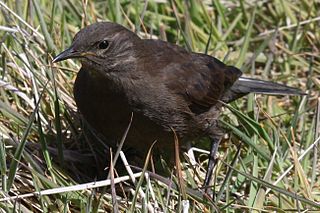 W
WThe blackish cinclodes is a passerine bird of the genus Cinclodes belonging to the ovenbird family Furnariidae. It is native to the southern tip of South America including the Falkland Islands where it is known as the tussac-bird or tussock-bird. It is often very tame and will approach humans closely.
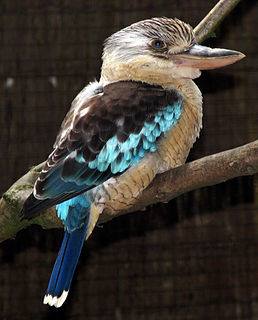 W
WThe blue-winged kookaburra is a large species of kingfisher native to northern Australia and southern New Guinea.
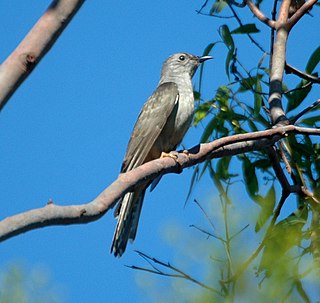 W
WThe brush cuckoo is a member of the cuckoo family.
 W
WThe Cape Rockjumper or rufous rockjumper is a medium-sized insectivorous passerine bird endemic to the mountain Fynbos of southernmost South Africa.
 W
WCassin's kingbird is a large tyrant flycatcher native to western North America. The name of this bird commemorates the American ornithologist John Cassin.
 W
WThe checker-throated woodpecker, checker-throated yellownape, or Javan yellownape is a species of bird in the family Picidae native to Southeast Asia.
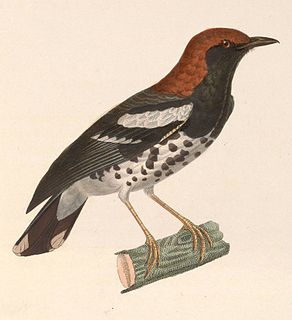 W
WThe chestnut-capped thrush lives in forests and woodlands of Southeast Asia. It is a songbird species in the family Turdidae. Traditionally, it has included the Enggano thrush as a subspecies, but a recent review recommended treating them as separate. Consequently, the chestnut-capped thrush is monotypic.
 W
WThe cream-backed woodpecker is a species of bird in the family Picidae. It is found in Argentina, Bolivia, Brazil, Paraguay and far northwestern Uruguay. Its natural habitat is subtropical or tropical dry forests.
 W
WThe crimson-breasted flowerpecker is a species of bird in the family Dicaeidae. It is found in Indonesia, Malaysia, Myanmar, and Thailand. Its natural habitats are subtropical or tropical moist lowland forest and subtropical or tropical mangrove forest.
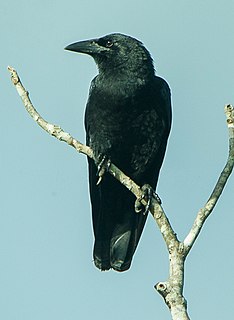 W
WThe Cuban crow is one of four species of crow that occur on a few key islands in the Caribbean. It is closely related to the white-necked crow and Jamaican crow, with which it shares similar features. The fourth Caribbean crow, the palm crow, is a later arrival in evolutionary terms and shows characteristics more akin to North American species such as the fish crow, which it is probably closely related to.
 W
WThe Cuban green woodpecker is a species of bird in the family Picidae. It is the only species within the genus Xiphidiopicus and is endemic to Cuba.
 W
WDenham's bustard, Stanley bustard or Stanley's bustard is a large bird in the bustard family. It breeds in much of Sub-Saharan Africa. It is a species of open ground, including agricultural land, grassland, flood-plains and burnt fynbos. It is resident, but some inland populations move to lower altitudes in winter. The common names for this species refer to the English explorer, Major Dixon Denham, and the English naturalist Edward Smith-Stanley, 13th Earl of Derby.
 W
WThe golden nightjar is a species of nightjar in the family Caprimulgidae. It is found in Sahel region in northern Sub-Saharan Africa.
 W
WThe great dusky swift is a South American species of swift in the family Apodidae. At 18 cm in length, it is large relative to other swifts, and dark brown in colour with a pale coloured head.
 W
WThe great-billed kingfisher or black-billed kingfisher is a species of bird in the subfamily Halcyoninae. It is endemic to the Sulawesi region of Indonesia. It can be found on the island of Sulawesi and in the Sula Archipelago.
 W
WThe greater sand plover is a small wader in the plover family of birds. The spelling is commonly given as "greater sandplover" or "greater sand-plover", but the official British Ornithologists' Union spelling is "Greater Sand Plover". The genus name Charadrius is a Late Latin word for a yellowish bird mentioned in the fourth-century Vulgate. It derives from Ancient Greek kharadrios a bird found in ravines and river valleys. The specific leschenaultii commemorates the French botanist Jean Baptiste Leschenault de la Tour.
 W
WThe green oriole or Australasian yellow oriole, is an inconspicuous inhabitant of lush tropical vegetation throughout Australia and New Guinea.
 W
WThe grey-headed bushshrike is a species of bird in the family Malaconotidae. It is widespread throughout Sub-Saharan Africa, although relatively absent in Central and Southern Africa. Its natural habitats are dry savannah and moist savannah.
 W
WThe black-headed heron is a wading bird of the heron family Ardeidae, common throughout much of sub-Saharan Africa and Madagascar. It is mainly resident, but some west African birds move further north in the rainy season.
 W
WThe common hill partridge, necklaced hill partridge, or simply hill partridge is a species of bird in the pheasant family found in Asia.
 W
WThe Indian cormorant or Indian shag is a member of the cormorant family. It is found mainly along the inland waters of the Indian Subcontinent but extending west to Sind and east to Thailand and Cambodia. It is a gregarious species that can be easily distinguished from the similar sized little cormorant by its blue eye, small head with a sloping forehead and a long narrow bill ending in a hooked tip.
 W
WThe Javan green magpie is a passerine bird in the crow family, Corvidae. This critically endangered species is endemic to montane forests on the Indonesian island of Java. It formerly included the Bornean green magpie as a subspecies, in which case the "combined" species was known as the short-tailed magpie. The bright green plumage is the result of the yellow pigment lutein, which they gain from their insect diet. They also feed on small lizards and frogs. Initially juveniles are bluish, but they become green after their first moult. In captivity, adults turn bluish if their diet is inadequate.
 W
WThe large fig parrot, also known as flame-headed fig parrot and Desmarest's fig parrot, is a species of parrot in the family Psittaculidae. It is found in the West Papuan Islands, Indonesia and in southern and western New Guinea.
 W
WThe large-billed lark or southern thick-billed lark is a small passerine bird found in southern Africa. The name "large-billed lark" may also refer to Bradfield's lark. The name "thick-billed lark" more commonly refers to the species of the same name.
 W
WThe little green woodpecker, or golden-backed woodpecker, is a species of bird in the family Picidae. It is found in Africa, living in forest edges, clearings, and forest-shrub mosaics. The International Union for Conservation of Nature (IUCN) has assessed it as a least-concern species.
 W
WThe Magellanic oystercatcher is a species of wader in the family Haematopodidae. It is found in Argentina, Chile and the Falkland Islands in freshwater lake and sandy shore habitats.
 W
WThe Micronesian imperial pigeon, also known as the Micronesian pigeon, is a species of bird in the family Columbidae (doves). It is found in Palau, the Caroline Islands, the Marshall Islands and Nauru. Its habitats include montane forests, secondary forests, forests on beaches, and mangroves. It is threatened by hunting and deforestation, and the IUCN has assessed it as a near-threatened species.
 W
WThe northern sooty woodpecker is a species of bird in the family Picidae. It is endemic to Luzon, Marinduque, Catanduanes and the Polillo Islands in the Philippines.
 W
WThe Nubian bustard is a species of bird in the bustard family. This is a medium-large bustard found in the sparsely vegetated interface between the southern margins of the Sahara desert and the northern part of the Sahel. It is found in Burkina Faso, Cameroon, Chad, Mali, Mauritania, Niger, Nigeria, and Sudan. Its natural habitats are dry savanna and subtropical or tropical dry shrubland.
 W
WPhilippine swamphen is a species of swamphen occurring in The Philippines. It used to be considered a subspecies of the purple swamphen, which it resembles, but has olive-chestnut mantle and scapulars, and the whole plumage is tinged with ash-grey.
 W
WThe Philippine trogon is a species of bird in the family Trogonidae. It is endemic to the Philippines.
 W
WThe red-necked aracari, or red-necked araçari, is a species of bird in the family Ramphastidae, the toucans, toucanets, aracaris, etc.
 W
WThe river lapwing is a lapwing species which breeds from the Indian Subcontinent eastwards to Southeast Asia. It range includes much of northern and northeastern India, and extends through Southeast Asia to Vietnam. It appears to be entirely sedentary. Formerly also called spur-winged lapwing, this name is better reserved for one of the "spur-winged plovers" of old, Vanellus spinosus of Africa, whose scientific name it literally translates. The masked lapwing of Australasia was at one time also called "spur-winged plover", completing the name confusion - particularly as none of these is a plover in the strict sense.
 W
WThe Senegal lapwing or lesser black-winged lapwing is a species of bird in the family Charadriidae. It is found in Angola, Burundi, Cameroon, Republic of the Congo, Democratic Republic of the Congo, Ivory Coast, Gabon, Gambia, Ghana, Guinea, Kenya, Liberia, Malawi, Mali, Mozambique, Nigeria, Rwanda, Senegal, Sierra Leone, Somalia, South Africa, Swaziland, Tanzania, Togo, Uganda, Zambia, and Zimbabwe.
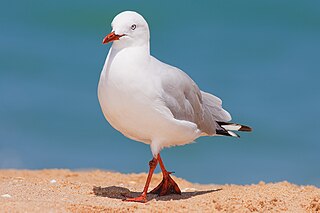 W
WThe silver gull is the most common gull of Australia. It has been found throughout the continent, but particularly at or near coastal areas. It is smaller than the Pacific gull, which also lives in Australia.
 W
WThe silvery grebe is a species of grebe in the family Podicipedidae. It is found in the western and southern part of South America at altitudes of up to 4,000 metres (13,000 ft). Its natural habitat is freshwater lakes but it also feeds in saline lakes.
 W
WThe spectacled monarch is a species of bird in the family Monarchidae. It is found in Australia, Indonesia, and Papua New Guinea. Its natural habitats are subtropical or tropical moist lowland forests, subtropical or tropical mangrove forests, and subtropical or tropical moist montane forests.
 W
WThe stilt sandpiper is a small shorebird. The scientific name is from Ancient Greek. The genus name kalidris or skalidris is a term used by Aristotle for some grey-coloured waterside birds. The specific himantopus means "strap foot" or "thong foot".
 W
WThe Sunda thrush is a species of bird in the family Turdidae. It is found in Indonesia, Malaysia, and the Philippines.
 W
WThe superb parrot, also known as Barraband's parrot, Barraband's parakeet, or green leek parrot, is a parrot native to south-eastern Australia. It is a dimorphic species and one of three species in the genus Polytelis.
 W
WThe thick-billed kingbird is a large bird in the family Tyrannidae, the tyrant flycatchers. This bird breeds from southeastern Arizona, extreme southwestern New Mexico, and northern Sonora,, in the United States and Mexico, through western and western-coastal Mexico, south to western Guatemala.
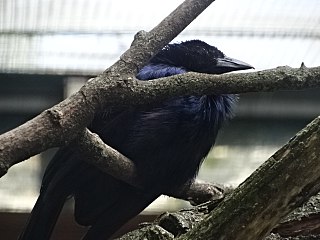 W
WThe trumpet manucode is a species of bird in the family Paradisaeidae.
 W
WThe western nicator is a species of songbird in the family Nicatoridae.
 W
WThe white-headed petrel, also known as the white-headed fulmar is a species of seabird in the petrel family, or Procellariidae. Its length is about 400 mm.
 W
WThe white-necked coucal or pied coucal is a species of cuckoo in the family Cuculidae. It is endemic to the Bismarck Archipelago. Its natural habitat is subtropical or tropical moist lowland forest.
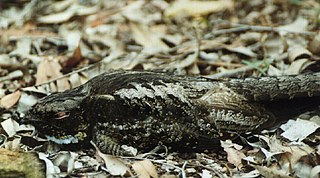 W
WThe white-throated nightjar is a species of nightjar in the family Caprimulgidae. It is endemic to eastern Australia; it is a non-breeding winter visitor in Papua New Guinea. Its natural habitat is subtropical or tropical dry forests.
 W
WThe great slaty woodpecker is a species of bird in the family Picidae. It is found across the Indian Subcontinent and Southeast Asia. A unique and basically unmistakable bird, it is the largest species of woodpecker that is certain to exist today. It is a fairly gregarious species.
 W
WThe yellow-breasted barbet is a species of bird in the Lybiidae family. It is found in Burkina Faso, Chad, Djibouti, Eritrea, Ethiopia, Mali, Mauritania, Niger, Nigeria, Somalia, and Sudan.
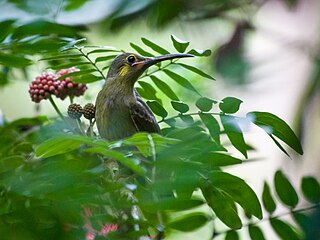 W
WThe yellow-eared spiderhunter is a species of bird in the family Nectariniidae. It is found in Brunei, Indonesia, Malaysia, Myanmar, Singapore, Thailand, and Vietnam. Its natural habitats are subtropical or tropical moist lowland forests, subtropical or tropical mangrove forests, and subtropical or tropical moist montane forests.
 W
WThe yellow-headed blackbird is a medium-sized blackbird, and the only member of the genus Xanthocephalus.
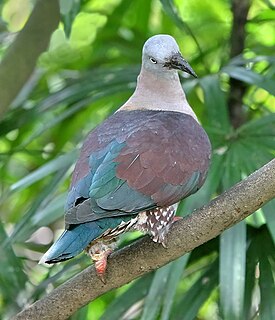 W
WZoe's imperial pigeon, also known as the banded imperial pigeon, is a species of bird in the family Columbidae. It is found in New Guinea. Its natural habitats are subtropical or tropical moist lowland forest, subtropical or tropical mangrove forest, and subtropical or tropical moist montane forest.